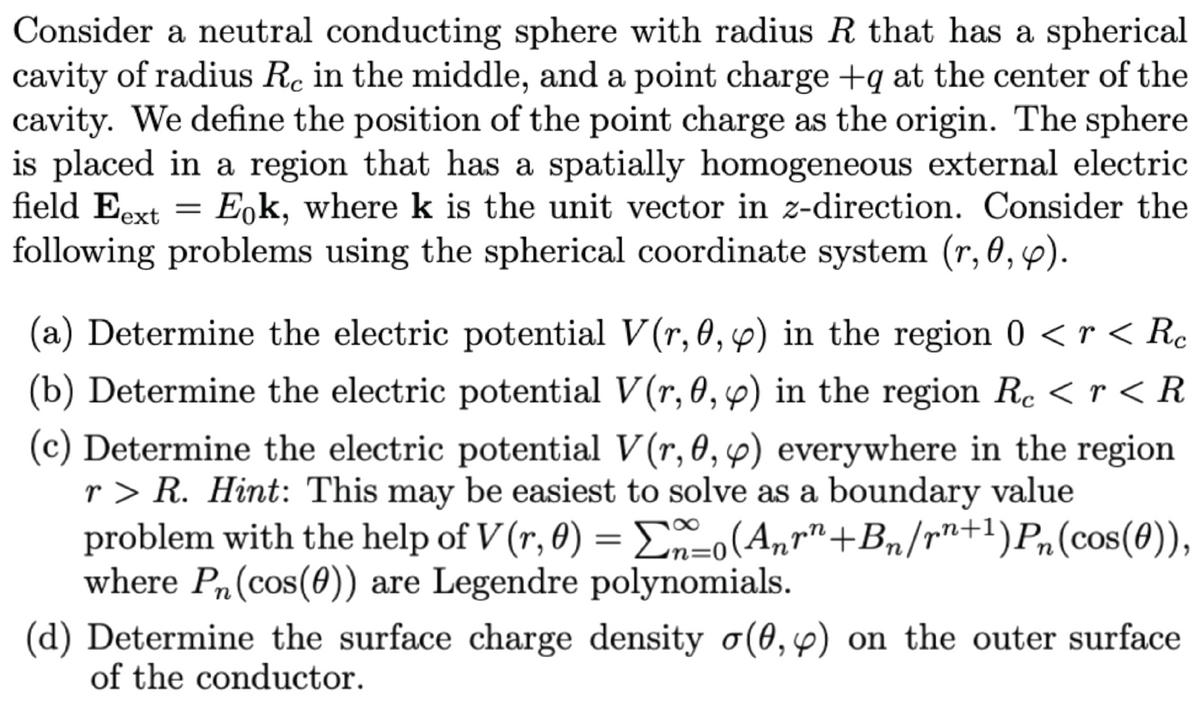Consider a neutral conducting sphere with radiusRthat has a sphericalcavity of radiusRcin the middle, and a point charge +qat the center of thecavity. We define the position of the point charge as the origin. The sphereis placed in a region that has a spatially homogeneous external electricfieldEext=E0k,wherekis the unit vector inz-direction. Consider thefollowing problems using the spherical coordinate system (r,✓,').(a) Determine the electric potentialV(r,✓,') in the region 0R.Hint: This may be easiest to solve as a boundary valueproblem with the help ofV(r,✓)=P1n=0(Anrn+Bn/rn+1)Pn(cos(✓)),wherePn(cos(✓)) are Legendre polynomials.(d) Determine the surface charge density(✓,') on the outersurface of the conductor.
Consider a neutral conducting sphere with radiusRthat has a sphericalcavity of radiusRcin the middle, and a point charge +qat the center of thecavity. We define the position of the point charge as the origin. The sphereis placed in a region that has a spatially homogeneous external electricfieldEext=E0k,wherekis the unit vector inz-direction. Consider thefollowing problems using the spherical coordinate system (r,✓,').(a) Determine the electric potentialV(r,✓,') in the region 0<r<Rc(b) Determine the electric potentialV(r,✓,') in the regionRc<r<R(c) Determine the electric potentialV(r,✓,')everywhereintheregionr>R.Hint: This may be easiest to solve as a boundary valueproblem with the help ofV(r,✓)=P1n=0(Anrn+Bn/rn+1)Pn(cos(✓)),wherePn(cos(✓)) are Legendre polynomials.(d) Determine the surface charge density(✓,') on the outersurface of the conductor.

Hello. Since your question has multiple sub-parts, we will solve the first three sub-parts for you. If you want the remaining sub-parts to be solved, then please resubmit the whole question and specify those sub-parts you want us to solve.
(a)
The given electric field in spherical coordinates be written as,

Since the electric field inside the cavity will be zero.
The electric potential inside the cavity be given as,

(b)
The electric potential at a distance RC < r < R, be calculated as,

Step by step
Solved in 7 steps with 6 images
